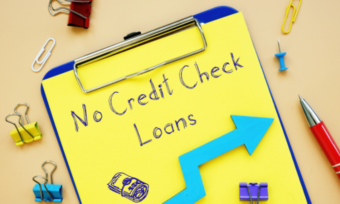Compare boat loans
Compare personal loans from Canstar’s Online Partners that can be used to purchase a boat.

Instantly compare 210+ Canstar expert rated products based on the inputs below
2023 Outstanding Value Personal Loans Award Winner
-
Additional repayments
-
Redraw facility
-
Top-up facility
-
Application fee: $300 up to $1200
-
Annualised fee: $0
-
Loan terms available: 1 year to 7 years
100% online quote. Won't affect your credit score
No monthly account keeping or early repayment fees
-
Additional repayments
-
Redraw facility
-
Top-up facility
-
Application fee: $575
-
Annualised fee: $0
-
Loan terms available: 3 years to 7 years
-
Additional repayments
-
Redraw facility
-
Top-up facility
-
Application fee: $0
-
Annualised fee: $0
-
Loan terms available: 3 years to 7 years
-
Additional repayments
-
Redraw facility
-
Top-up facility
-
Application fee: $0 up to $600
-
Annualised fee: $0
-
Loan terms available: 3 years to 7 years
-
Additional repayments
-
Redraw facility
-
Top-up facility
-
Application fee: $300 up to $1200
-
Annualised fee: $0
-
Loan terms available: 1 year to 7 years
-
Additional repayments
-
Redraw facility
-
Top-up facility
-
Application fee: $175
-
Annualised fee: $60
-
Loan terms available: 0 to 7 years
-
Additional repayments
-
Redraw facility
-
Top-up facility
-
Application fee: $575
-
Annualised fee: $0
-
Loan terms available: 3 years to 7 years
Showing 5 of 100 results
To see more results adjust the filters above
Unsure of a term in the above table? View glossary
The initial results in the table above are sorted by Star Rating (High-Low) , then Comparison rate^ (Low-High) , then Provider Name (Alphabetical) . Additional filters may have been applied, see top of table for details.
SPONSORED
-
Rated 5-Star by CANSTAR for Outstanding Value
-
Funding approved in 24 hours, up to $75,000 loan amount.
What are boat loans?
A boat loan is a personal loan that you can use for the purpose of buying a marine vessel. It is a loan that you can use to purchase a new or used boat, either from a dealer or by private sale.
Some lenders offer loans specifically designed for those purchasing a boat, while others offer more standard personal loans, which can be used to finance a boat purchase among other things.
In either case, a boat loan can be secured or unsecured. In the first of these instances the boat itself will generally be used as security against your loan.
Frequently Asked Questions about Boat Loans
Latest in personal loans
Canstar Personal Loans Star Ratings and Awards
Looking for an award-winning personal loan or to switch lenders? Canstar rates products based on price and features in our Personal Loans Star Ratings and Awards. Our expert Research team shares insights about which products offer 5-Star value and which providers offer outstanding value overall.
Canstar rates a range of financial products, covering banking, insurance and investment. We also reveal which providers have the most satisfied customers in our dedicated Customer Satisfaction Awards.
Explore more Personal Loans:
OurMoneyMarket personal loans
Compare unsecured car loans
Personal loans with extra payments
Personal loans with no early repayment fee
Finance gaming PC
Laptop loans
Personal loans for renovations
Personal loans for self employed
Personal loans in South Australia
Personal loans in Nothern Territory
Personal loans in Tasmania
Personal loans in Victoria
About our finance experts
Alasdair Duncan, Senior Finance Journalist

Joshua Sale, Group Manager, Research & Ratings

As Canstar’s Ratings Manager, Josh Sale is responsible for the methodology and delivery of Canstar’s Personal Loans Star Ratings and Awards. With tertiary qualifications in economics and finance, Josh has worked behind the scenes for the last five years to develop Star Ratings and Awards that help connect consumers with the right product for them.
Josh is passionate about helping consumers get hands-on with their finances. Josh has been interviewed by media outlets such as the Australian Financial Review, news.com.au and Money Magazine.
You can follow Josh on LinkedIn, and Canstar on Twitter and Facebook.
Thanks for visiting Canstar, Australia’s biggest financial comparison site*
Important information
For those that love the detail
This advice is general and has not taken into account your objectives, financial situation or needs. Consider whether this advice is right for you.












